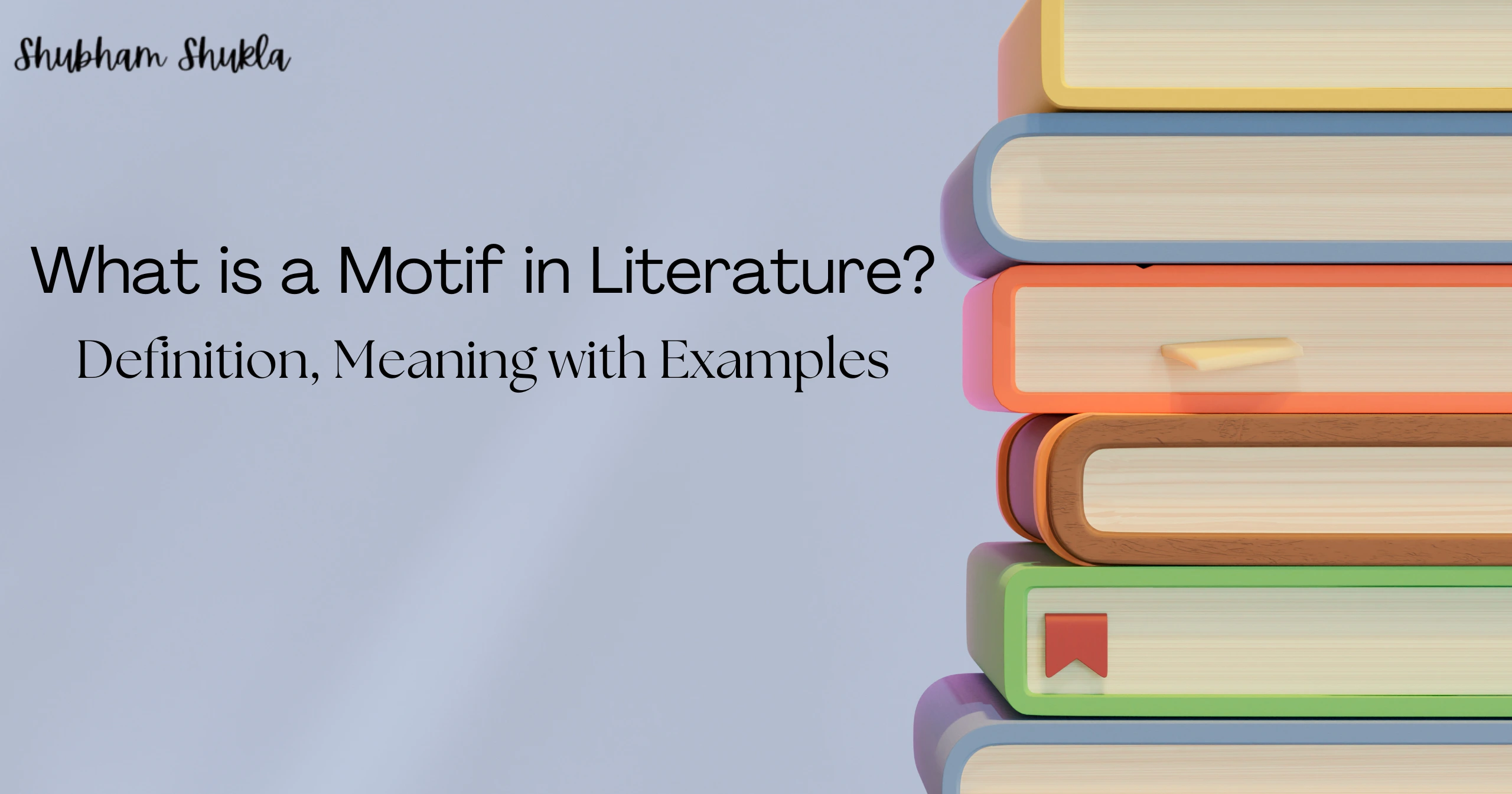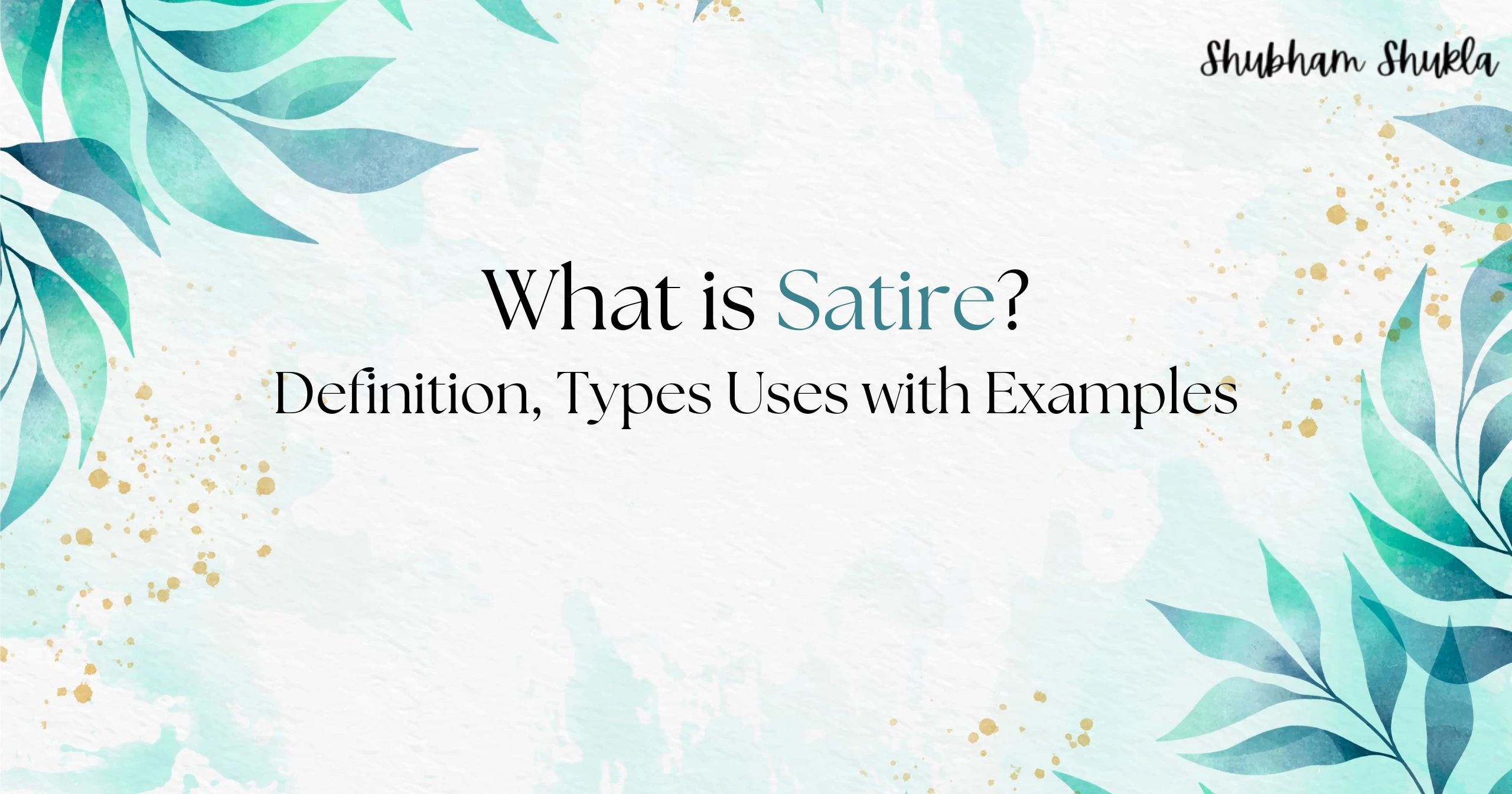In the world of stories and literature, there is something called a “motif.” It’s like a mystical substance that lends significance and beauty to the story. Consider it a dance in which this unique element reappears, enriching and enticing the narrative. In our adventure today, we’ll learn about motifs.
Consider it a voyage in which every repetition in a story serves as a secret code or a gorgeous tune that adds to the overall experience. Join us as we explore the simple yet fascinating realm of motifs in literature – the hidden treasures that bring stories to life.
You may also read: Powerful Adjectives to Describe a Person (With Examples & Tips)
What is Motif in Literature
A motif in literature is a distinct pattern or theme that appears repeatedly throughout a story. The word “motif” derives from French and refers to a pattern or theme. Unlike big ideas known as themes, motifs are specific elements, notions, or structures that appear again in a literary work, providing levels of significance.
Imagine a motif as a repeating melody in a song. Every time you hear it, it adds something fresh to the music. Similarly, in stories, a motif is a recurring element or image that changes and evolves as the plot progresses. It’s like a secret ingredient that authors utilise to give their work a distinct and identifiable flavour.
Consider the rose as a motif in a story. It may first connote love and beauty. However, as the story progresses, the same rose may become to symbolise new things, such as the fragility of relationships or the passage of time. The shifting character of motifs distinguishes them from set themes. Writers employ motifs to include intricate symbolism into their works, allowing them to connect with readers on a deeper level.
Motifs are like building bricks of a story, connecting different elements. They connect people, events, and emotions, forming a cohesive story. Motifs form a sort of secret language within the plot when they are repeated and changed. They can convey complex concepts and feelings without directly expressing them.
Motifs are primarily storytelling tools. They help a story be more than just its surface plot and characters. They are similar to secret codes that, when deciphered, reveal hidden meanings and deep layers in literature. As we study motifs, we uncover writers’ unique ability to transform words into immersive and meaningful narratives.
Read: What is Tone in Literature? and Learn Why It is Crucial in Storytelling
Characteristics of Motifs
- Contribution to themes: Motifs serve an important function in establishing and reinforcing larger themes in literature. Blood is a recurring element in William Shakespeare’s “Macbeth,” representing guilt and the repercussions of uncontrolled ambition. This motif adds to the broader themes of moral degradation and the destructive nature of power, deepening the reader’s awareness of the play’s major ideas.
- Repetition: Motifs are distinguished by their repetition, which occurs several times throughout a novel. This repetition can take many different forms, including a specific picture, symbol, phrase, or event. For example, in F. Scott Fitzgerald’s “The Great Gatsby,” the motif of the green light is repeated to represent Gatsby’s impossible dreams. Each appearance emphasises its significance, resulting in a pattern that develops the story.
- Symbolic Significance: Motifs have symbolic weight, representing deeper meanings or theme components. In Nathaniel Hawthorne’s “The Scarlet Letter,” the scarlet letter represents sin and society judgement. Its frequent appearance not only emphasises Hester Prynne’s troubles, but also serves to the narrative’s larger investigation of morality.
Let’s Explore the Meaning of Motif
- Emotional Resonance: By repeating specific themes connected with emotions or moods, authors create a consistent emotional resonance throughout the story. In Charlotte Brontë’s novel “Jane Eyre,” fire is a recurring theme. This pattern corresponds to Jane’s passionate and resilient personality. Fire represents both warmth and devastation, therefore its repetition heightens the emotional intensity of Jane’s trip, establishing a thematic link between her inner anguish and the repeated motif of fire. The emotional resonance created by such motifs increases the reader’s involvement and empathy for the characters and their situations.
- Representation and Symbolism: Motifs are powerful symbols that encapsulate abstract concepts in tangible and recurrent pictures. In F. Scott Fitzgerald’s “The Great Gatsby,” the green light at the end of Daisy’s dock serves as a melancholy metaphor. This green light represents Gatsby’s unrealistic American Dream, as well as his aspirations and elusive desires. Its recurrence throughout the story emphasises the green light’s significant symbolic significance, resulting in a sophisticated layer of meaning that goes beyond the literal.
- Thematic Reinforcement: Motifs serve an important function in reinforcing and magnifying primary themes in literary works. The blood motif appears throughout Shakespeare’s “Macbeth.” Beyond its literal meaning, the motif represents guilt, brutality, and the repercussions of unbridled ambition. Each act of carnage, from Duncan’s murder to Lady Macbeth’s notorious handwashing scene, underscores the overall themes of moral degradation and the fatal power of unfettered ambition. The motif serves as a thematic anchor, incorporating its symbolic meaning into the larger narrative tapestry.
You may also read: Top 10 Best Libraries in Lucknow for Bookworms
Examples of Motifs in Literature
- The “Mockingjay” in “The Hunger Games”: Suzanne Collins uses the mockingjay motif as a potent symbol in her dystopian trilogy “The Hunger Games.” Initially connected with revolt, the mockingjay grows in importance throughout the story.
- It evolves from a symbol of defiance to a spark for revolution. The motif reflects the oppressed’s tenacity in the face of a harsh ruler. As Katniss Everdeen embraces the mockingjay symbol, it becomes a unifying force for the districts, instilling a sense of rebellion against the Capitol’s oppression.
- The motif’s progression highlights the trilogy’s investigation into power dynamics, resistance, and the impact of symbols on collective consciousness.
- Water Imagery in “The Old Man and the Sea”: Hemingway’s book expertly uses the topic of water to express significant significance. The sea, in its vastness, serves as a metaphor for life’s journey. Santiago’s fishing expedition represents the human struggle for survival, perseverance, and tenacity. The ocean’s constant ebb and flow symbolise Santiago’s internal struggles and persistent tenacity in the face of hardship. The motif of water, with its dual nature as a life-sustaining force and a formidable struggle, encapsulates the novella’s themes of existentialism and the unbreakable spirit of the human experience.
- The Journey Motif in “The Odyssey”: The hero’s journey is a recurring theme in Homer’s epic poem The Odyssey. Odysseus’ quest to return home becomes a timeless contemplation of personal development, trials, and triumphs.
- The trip concept is expressed through many adventures, each of which contributes to Odysseus’ change. From confronting mythological animals to negotiating the perilous sea, Odysseus’ journey reflects the common human experience of self-discovery and endurance.
- The motif acts as a narrative structure, guiding readers through the hero’s transforming journey while also underlining the epic’s overarching topic of the hero’s search for identity and home.
You may also read: Synopsis of Haunting Adeline: How This Dark Romance Is Gripping America
The Evolution of Motifs
- Interconnected Motifs: Some narratives incorporate interrelated motifs, resulting in a web of symbolism that adds to the story’s intricacy. In Gabriel García Márquez’s “One Hundred Years of Solitude,” the themes of loneliness, yellow, and butterflies are interwoven. The secluded village of Macondo represents solitude, while yellow and butterflies come at critical points. The interaction of these elements forms a rich tapestry of symbolism, with loneliness signifying the town’s fate, yellow indicating the passage of time, and butterflies reflecting the cyclical nature of life and death. The interconnected themes add to the novel’s allegorical richness, enabling readers to figure out the deep relationships between these recurrent aspects.
- Dynamic Transformation: Motifs have a dynamic nature, enduring modifications that correspond to the characters’ development and the story’s evolution. The phoenix motif changes dynamically in J.K. Rowling’s “Harry Potter” books. Initially introduced as a sign of Dumbledore’s wisdom and protection, the motif changes as Harry meets trials. The phoenix reappearing at important periods, including as Dumbledore’s death and the Battle of Hogwarts, represents not only resilience, but also the cyclical nature of life and rebirth. This dynamic change of the phoenix motif represents Harry’s journey, bringing levels of significance and emotional depth to the story.
- Historical and Cultural Context: Motifs in literature can be strongly impacted by the cultural and historical background of the moment. In Chinua Achebe’s “Things Fall Apart,” the yam motif has cultural significance in Igbo society. The yam symbolises riches, masculinity, and social position. Its recurrence throughout the narrative illustrates Igbo cultural values and norms. Understanding the historical backdrop enables readers to comprehend the various connotations associated with the yam motif, enriching their interpretation of the story and its examination of cultural identities.
Throughout the broad expanse of literature, motifs emerge as intricate threads that weave the fabric of storytelling. Motifs enrich the reader’s experience and provide a sophisticated comprehension of complicated narratives through recurrence, symbolic importance, and contributions to overarching themes.
As we read through the pages of various literary works, the motifs we come across serve as guiding beacons, enticing us to uncover the profound meanings woven throughout the tapestry of human expression.
You may also read: Synopsis of Haunting Adeline: Why This Dark Romance Is Gripping America



